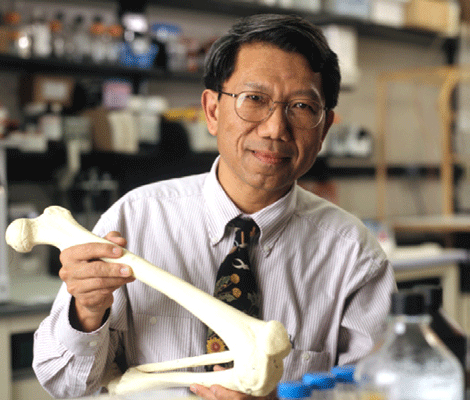
The University of Pittsburgh School of Medicine is developing organic 3D printed cartilage using an EnvisionTEC Perfactory machine
That collective groan of relief you can hear is of the thousands of ex-sportmen (pro and amateur) around the world, hoping that their knees will once again work properly.
Rocky Tuan, PhD, is a professor and executive vice chairman of the department of orthopedic surgery as well as the director of the Center for Cellular and Molecular Engineering at the University of Pittsburgh School of Medicine – obviously a busy man – but he’s found time to develop organic 3D printed cartilage using an EnvisionTEC Perfactory machine.
This research is the first success of living human cartilage tissue composed atop a chip using 3D printing.
The process to create cartilage fuses stem cells, activating biological components, and a tissue scaffolding.
Tuan’s team uses the digital placement technology to fabricate an extracellular matrix inside a solution, before the cells are then introduced into the solution where they may proliferate.
The light technology of the Perfactory is apparently the best for an application building with living cells, as processes that use filaments or deposition would harm human cells while photopolymers preserve cell vitality.
The resulting ‘print’ can not only can sustain the shape in which it is designed (ie. of a healthy bit of knee cartilage) but Tuan’s research team has found it can also sustain human cells.
It’s not yet ready to take the place of non-organic replacement joints, but as Tuan has said, “It’s very promising and looking good.” At the least the research developed by the team can help scientists better understand what causes osteoarthritis and how to combat degenerative bone diseases with drug therapy.
It’s hoped that this will find its way to helping injured soldiers in combat zones, sportsmen, and people with knees shattered by a careless youth…






